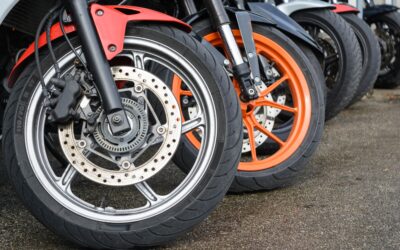Table Of Contents
- Does motorbike insurance cover tyre repairs?
- What makes a motorcycle tyre good in different weather conditions?
- What tread patterns matter for motorcycle tyre safety?
- How long to motorbike tyres last?
- How can I tell if I need new tyres?
- What is the minimum tread depth on motorcycle tyres?
- How do tyres affect my motorcycle insurance?
Does motorbike insurance cover tyre repairs?
Generally speaking, motorbike insurance doesn’t cover tyre repairs. This is particularly true if the damage has been caused from braking too hard or a puncture. Despite this, there is usually an option to add tyre insurance to your policy which won’t impact your no claims bonus. Alternatively, you can consider motorbike breakdown cover to support you in times of need as an optional extra. Looking for a reliable motorcycle insurance quote? Simply enter your details on our website and receive the best quotes,
What makes a motorcycle tyre good in different weather conditions?
When considering motorbike tyre safety, it’s important to understand what makes a motorcycle tyre good in different weather conditions. The best weather motorcycle tyres quickly warmup and disperse water, ensuring wet and or cold conditions have minimal impact to your ride. Motorbike tyres are commonly made from two materials: Silica or Sipes:
- Silica: Motorcycle tyres with silica compounds offer improved grip, particularly in wet conditions, improving safety on wet or otherwise slippery roads.
- Sipes: Tires with sipes provide greater traction and stability by effectively dispersing water, reducing the risk of hydroplaning in wet conditions.
What tread patterns matter for motorcycle tyre safety?
As a motorcycle owner, it’s important to know the tyre tread depth law UK. There are four types of tyres in total, which are:
- Street: Street motorcycle tires feature a smooth tread pattern that’s designed to provide maximum grip and stability on paved roads.
- 60/40: 60/40 tire tread is designed for riders who spend 60% of their time on pavement and 40% exploring off-road terrain.
- 40/60: On the other hand, the 40/60 tire tread prioritises off-road terrain such as gravel or dirt.
- Dirt: Dirt motorcycle tires feature an aggressive tread pattern, offering maximum traction on uneven, off-road surfaces.
How long to motorbike tyres last?
On average, motorbike tyres last for approximately 3,700 miles of service from the front tyre, and 1,800 miles from the rear tyre.
How can I tell if I need new tyres?
There are a few telltale signs that may prompt you to check if you need new motorbike tyres including your motorcycle tread depth, visible signs of wear, the age of the type and tyre type.
What is the minimum tread depth on motorcycle tyres?
When considering whether you need new motorcycle tyres, being aware of the motorcycle minimum tread depth can help you determine the longevity left in your current tyres. For your motorcycle tyre tread depth to be legal, they must have at least 1mm of tread remaining around the circumference of the tyre, a minimum level of tread applied to 75% of the tyre width and the tyre pattern must be visible on at least 25% of the tyre.
How do tyres affect my motorcycle insurance?
If you are found riding with less than the minimum motorcycle tread depth, you risk a fine of up to £2,500. An illegal motorcycle tread depth will also invalidate your motorcycle insurance should you experience an accident. Are you seeking temporary bike insurance or multi bike insurance? Easily search for the best deals and compare prices online with Motorcycle Insurance.
Frequently Asked Questions
What does the writing on the side of a motorbike tyre mean?
How long do motorbike tyres last?
What is the difference between tube and tubeless motorcycle tyres?
Third Party Fire & Theft Cover Motorbike Insurance Explained
Table Of Contents How much...
Motorcycle Breakdown Cover
Table Of Contents What is...
Buyers Guide to Scooter & Moped Tyres
Table Of Contents What Do...



